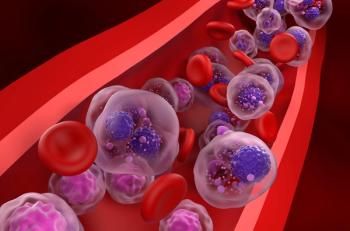
Trial Evaluating Avelumab in Epithelial Ovarian Cancer Fails to Meet Primary Endpoint
The JAVELIN trial is a randomized, open-label, phase 3 trial comparing avelumab in combination with chemotherapy versus chemotherapy alone.
The first phase 3 trial investigating the use of avelumab (Bavencio, Merck) in combination with and/or following chemotherapy in patients with previously untreated epithelial ovarian cancer (EOC) failed to meet its primary endpoint of improved progression-free survival (PFS) in either arm, according to data presented in conjunction with the Society of Gynecologic Oncology 2020 Annual Meeting on Women’s Cancer.1
The JAVELIN trial is a randomized, open-label, phase 3 trial comparing avelumab in combination with chemotherapy versus chemotherapy alone.1
EOC is the most common form of ovarian tumor, occurring in approximately 90% of patients with ovarian cancer. The tumors grow from the cell lining or covering of the ovaries and fallopian tubes.2
In the study, 998 patients with stage III-IV EOC were randomized 1:1:1 to receive 6 cycles of either chemotherapy followed by avelumab maintenance therapy, chemotherapy with avelumab followed by avelumab maintenance, or chemotherapy followed by observation. The primary endpoint was PFS determined by blinded independent central review.1
At the interim analysis, median follow-up for PFS averaged 11.1 months for those receiving chemotherapy followed by avelumab, 11.0 months for the group receiving concurrent avelumab and chemotherapy followed by avelumab maintenance therapy, and 10.2 months for the group receiving chemotherapy alone. In both avelumab arms, PFS was not improved compared with the control, prespecified futility boundaries were crossed, and the trial was stopped.1
Hazard ratios for PFS in the avelumab arms versus the control were 1.43 in those receiving avelumab following chemotherapy and 1.14 for those receiving concurrent chemotherapy and avelumab followed by maintenance therapy with avelumab.1
The median PFS was 16.8 months for those receiving avelumab following chemotherapy, 18.1 months for those receiving both treatments concurrently followed by avelumab maintenance therapy, and NE for those receiving chemotherapy alone.1
Finally, objective response rates were 30.4% in those receiving avelumab following chemotherapy, 36% for patients receiving concurrent therapies followed by avelumab, and 30.4% for those receiving chemotherapy alone.1
Subgroup analyses did not identify any subsets with clear benefit in either avelumab arm. No new safety signals were observed. Grade 3 or higher treatment-emergent adverse events of any causality were observed in 66.5% of those receiving avelumab following chemotherapy, in 70.8% of those receiving concurrent therapies with avelumab maintenance therapy, and 62.6% of those receiving chemotherapy alone.1
REFERENCES
- Ledermann J, Colombo N, Oza A, Fujiwara K, et al. Avelumab in combination with and/or following chemotherapy vs chemotherapy alone in patients with previously untreated epithelial ovarian cancer: Results from the phase 3 javelin ovarian 100 trial. SGO Conference website. Published March 29, 2020. https://sgo.confex.com/sgo/2020/meetingapp.cgi/Paper/17102. Accessed April 8, 2020.
- Types & Stages of Ovarian Cancer. National Ovarian Cancer Coalition website; http://ovarian.org/about-ovarian-cancer/what-is-ovarian-cancer/types-a-stages. Accessed April 8, 2020.
Newsletter
Stay informed on drug updates, treatment guidelines, and pharmacy practice trends—subscribe to Pharmacy Times for weekly clinical insights.













































































































































































































